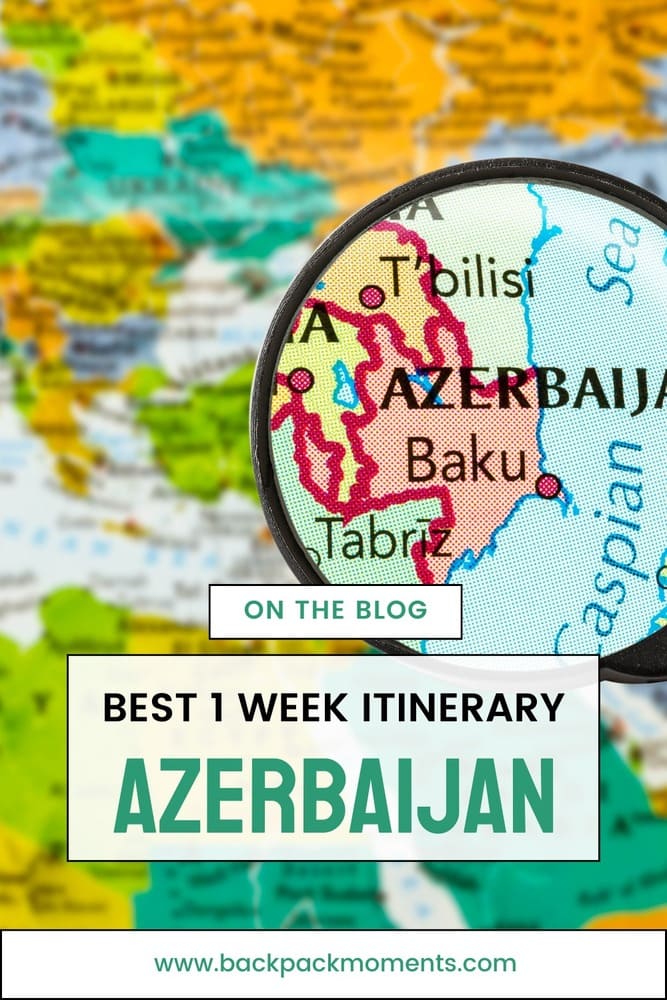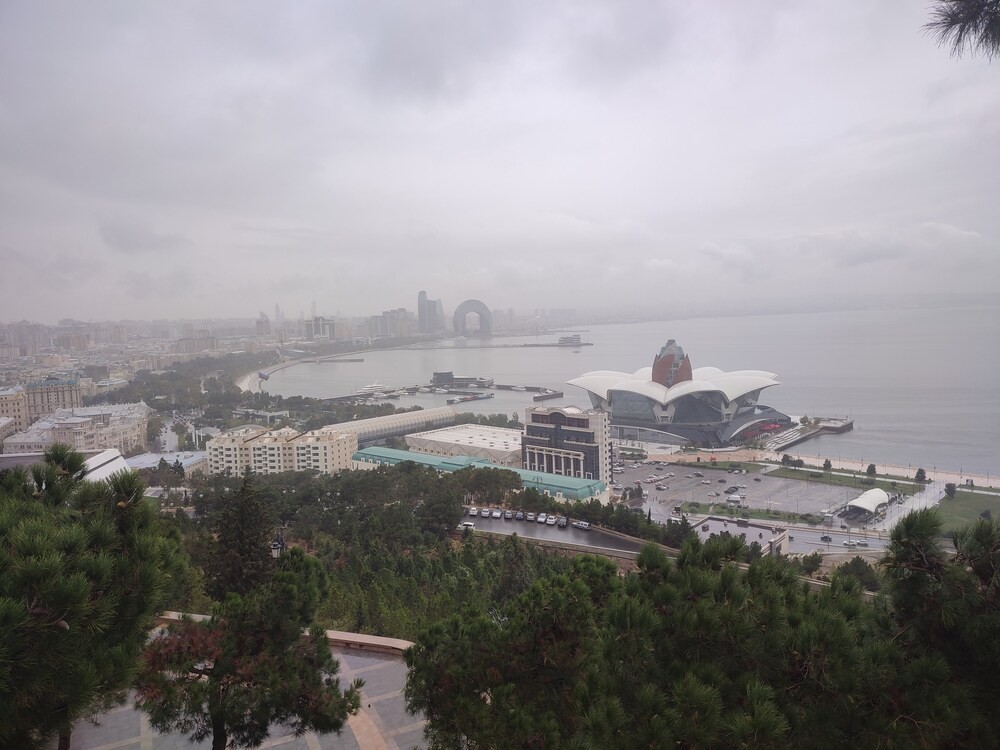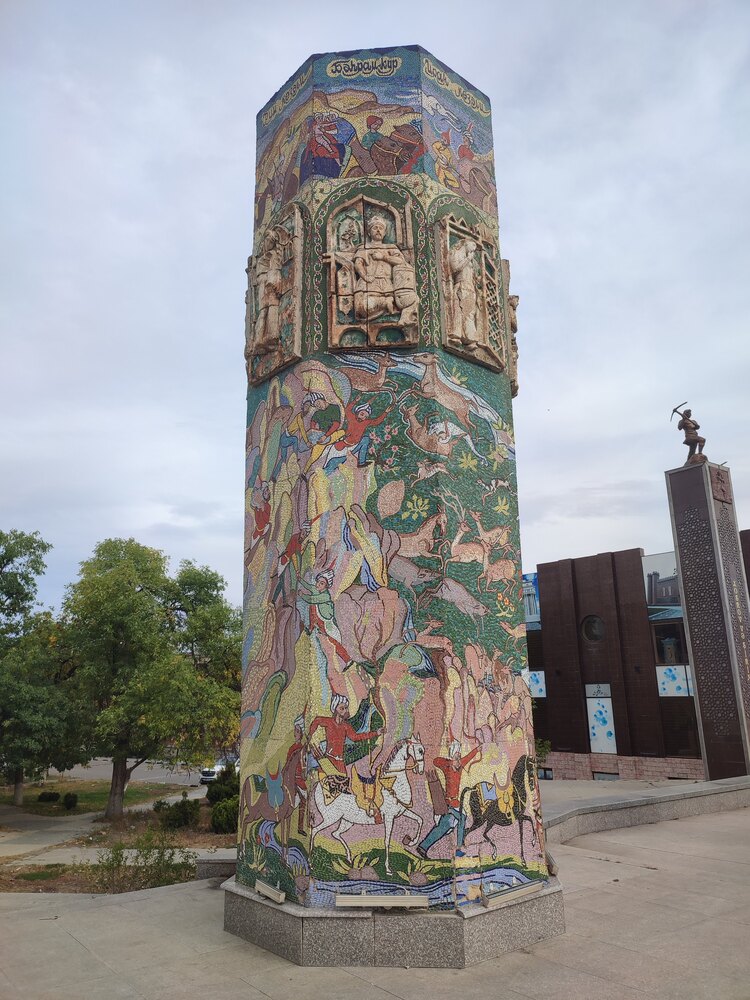1 Week in Azerbaijan: A Budget Guide to the Land of Fire
This post may contain affiliate links. If you make a purchase using one of these links, I may receive a small reward at no extra cost to you. See my Disclosure Policy for more information.
Aaah, Azerbaijan! This Caucasus country is an odd mixture of old-school Soviet lifestyle and gas-profits-fueled modernity (pun intended).
The capital Baku is akin to a Caucasus Dubai, but go to the countryside and you have such a genuine and authentic country with friendly and hospitable people, flavorful food, and peculiar natural wonders.
Here’s a budget backpacker’s week-long Azerbaijan itinerary including some of the must-visit places and invaluable logistics to plan your trip.
Day 1: Baku
You’ll likely arrive in Baku to start your exploration of Azerbaijan. The capital city is rich in culture and history, but with a modern skyline that sticks out like a sore thu.. fire-shaped, glass towers, I guess?
Historical Baku
- Begin your journey with a visit to the iconic Maiden Tower (free), a UNESCO World Heritage site, and climb to the top for stunning views of the city (not free – 10 AZN / 5.5EUR);
- Next, make your way to the Baku Old City, also called Icheri Sheher, for a stroll through ancient architecture and narrow alleys (free and make sure to check out the cats!);
- Be sure to visit the Palace of the Shirvanshahs (10 AZN / 5.5EUR), a royal residence dating back to the 15th century;
- Go back to the modern town to visit a pocket of history in the face of the historic market of Taza Bazaar (free to walk around, cheap to eat);
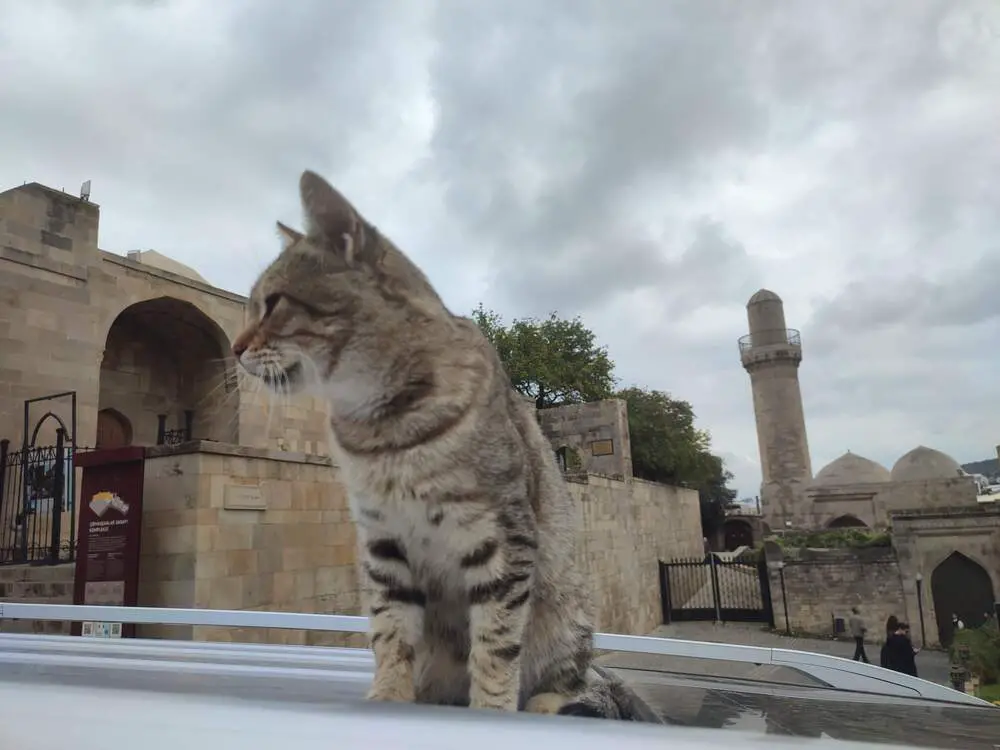
There are many cats in Icheri Sheher. Feels a bit like Istanbul and its cats.
Modern Baku
- The Flame Towers are three skyscrapers in Baku that are known for their unique design, which resembles flames. At night, the towers are lit up and can be seen from all over the city. Free.
- Heydar Aliyev Center: The Heydar Aliyev Center is a cultural complex that is home to a museum, exhibition halls, and a conference center. It is known for its futuristic design and has won several architectural awards. It was designed by none other than Zaha Hadid. Adults pay 15 AZN / 8.2 EUR.
- Baku Boulevard is a seaside promenade that stretches along the Caspian Sea. It is a popular spot for locals and tourists alike, with attractions such as amusement parks, restaurants, and the Baku Eye Ferris Wheel. Free unless you splurge on ice cream on a hot day.
- The Azerbaijan Carpet Museum is dedicated to the art of Azerbaijani carpets and weaving. People mostly know of Persian carpets, but Azeri carpets are just as masterfully made and exquisite. The museum features a collection of over 10,000 carpets and textiles, as well as exhibitions and workshops. The ticket costs 10 AZN / 5.5 EUR.
- The Baku Subway is your go-to transport option within the city. A single-ride ticket costs 0.3 AZN / 0.16 EUR and can be purchased at vending machines located at the entrance of each station. If you’re into Soviet-style subway systems, then it’s a must-visit. The Nizami Station on the Green Line is very close to the modern city center and probably the most beautiful.
- Explore the many statues and sculptures in the city. Seriously, there are so many!
One day is surely not enough for all those places. Save some for the last two days when you’ll return to Baku.
Day 2: Sheki
The Old Town of Sheki remembers the days when merchants from faraway lands made stops at its imposing Caravanserai.
The Silk Road passed through Sheki and shaped it in the most Silk Road way possible – cobblestone streets, small cutesy houses, a grand palace for the khans that made all of it possible and the spirit of proud people who nonetheless keep their doors open for travelers.
Getting to Sheki
If you’re short on time (this is a guide for just 1 week after all), you can take the overnight bus to Sheki. When I was there, the trains were still not running due to COVID (but now in 2024 I hear they’ve been restarted).
I took the overnight bus and it cost 8 AZN / 4.4 EUR. It’s not the most comfortable and gets to Sheki before sunrise, so unless you want to save a day, get on the early morning bus instead.
What to see?
- Sheki Khan’s Palace is a beautiful example of Shebeke architecture from the 18th century. The entrance fee is 4 AZN / 2.2 EUR. You cannot take any pictures inside and there’s a guide with you the whole time. The architecture and paintings are truly impressive, although the palace is small.
- The Sheki Caravanserai is a historic inn located in the heart of Sheki’s Old Town, dating back to the 18th century. It served as a resting place for traders along the Silk Road and now functions as a museum, offering visitors a glimpse into the city’s rich history and culture. The main courtyard is free to enter, but the second floor is reserved for guests of the hotel.
- Stroll through Sheki Historic Center, which is home to numerous old houses decorated with elaborate murals and traditional Azerbaijani ornaments. Free.
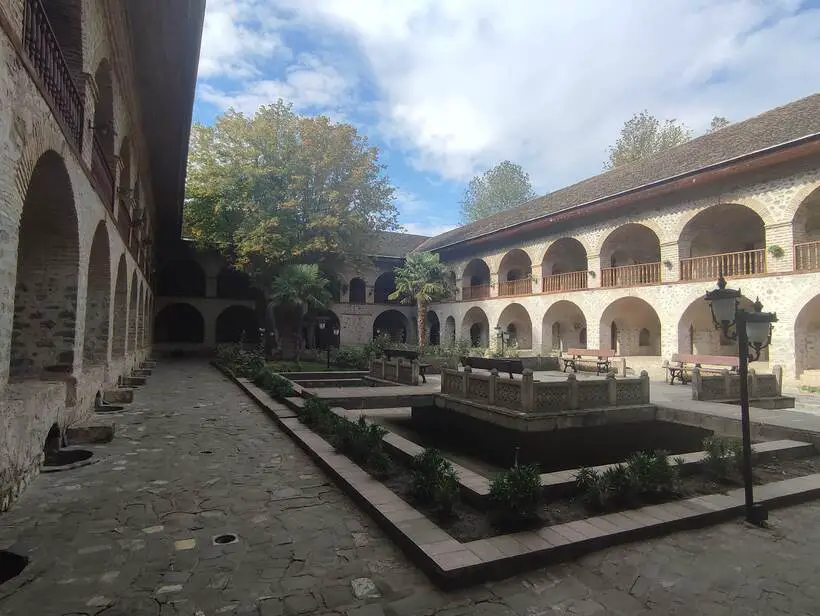
Day 3: Around Sheki
Spend your second day in Sheki exploring its surrounding areas. Start by taking a local bus to the Kish village (buses depart from New Bazar in the west part of town), located around 5km away from the city center.
It’s one hell of a ride, but it’s all part of the local culture, I guess. There, you’ll find the oldest church in Azerbaijan, the Kish Albanian Church (this is a different Albania! See this article to find out more about the modern country of Albania), and you can explore its ruins amidst the beautiful countryside.
On the way back you can take the same public bus which will drop you off at the Sheki Bazaar where you can immerse yourself in the local culture and cuisine.
Top recommendation: Try the Sheki Halva. You cannot find this type of halva anywhere else.

If you have time, you can go to the village of Qax in the afternoon. It’s about 35 km from Sheki and regular buses go from and to Qax every hour.
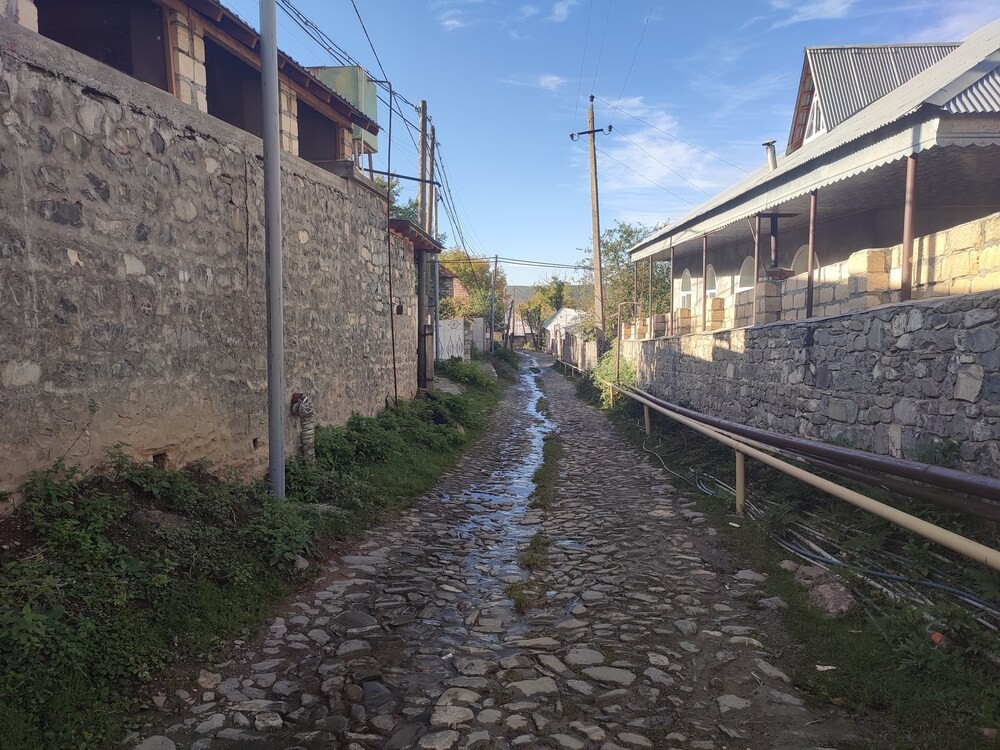
Day 4: Ganja
Ganja is an Azeri city in transition. From the shadows of the USSR and central planning rose a phoenix of culture and arts.
If Baku is the new and Sheki is the old, then Ganja is the city on the crossroads between the two.
Transport to Ganja
A public marshrutka bus connects Sheki and Ganja every morning. Enquire at the avtovagzal (bus station) in Sheki about accurate timing. It should cost around 5 AZN / 2.7 EUR.
Attractions
- Ganja Gate is one of the few remnants from the medieval period.
- Juma Mosque is a beautiful 17th-century mosque with intricate decorations.
- Nizami Ganjavi Mausoleum is the tomb of the famous Azerbaijani poet Nizami, who lived during the medieval period. Remember the most beautiful subway station in Baku? It’s named after him.
Fun Fact: Ganja is known as the “City of Poetry” because many prominent poets, including Nizami, were born in or lived in the city.
Honorable mention to the Ali and Nino statue that resembles (albeit much smaller and not moving) the same statue in Batumi.
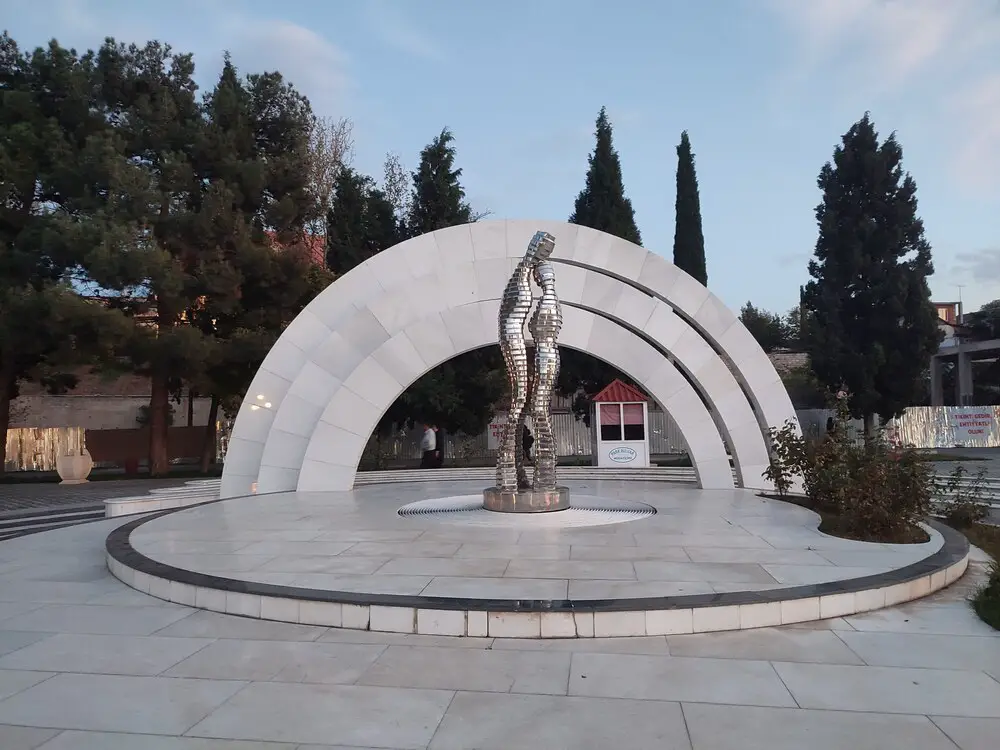
Day 5: Return to Baku (or stop at Naftalan)
You’ll probably need to get back to Baku at the end of your one-week trip. At least I had to. The bus (or train, if the rail service is resumed) departs from Ganja International Bus Station, which is a bit too far from the center to walk but you can take public bus #17 or #23 from the center.
The journey back to Baku is approximately 5 hours, including a short lunch or a dinner break, and costs 9 AZN / 5 EUR.
In the afternoon you can visit any of the Baku attractions you still haven’t been to.
An alternative plan is to visit Naftalan, a town literally named after oil. There, you can indulge in an oil spa in one of the spa centers in the otherwise dying spa industry.
Yes, they literally allow you to bathe in oil. Crazy.
Day 6: Mud Volcanos and Fire Temple
Azerbaijan is known as the land of fire due to the abundance of natural gas which often immolates on its own.
It’s a land of extremes – extreme winds, extreme seismic activity, extreme volcanic activity. Really, many of the natural wonders in Azerbaijan are pretty extreme.
Mud Volcanoes
Leave the best for last, right? The Mud Volcanoes are one of the most unusual natural phenomena in the world. There are over 400 mud volcanoes in Azerbaijan, and the most accessible ones are located in the Gobustan National Park.
The mud volcanoes are active and continuously spew gas along with various minerals that form the mud. An interesting fact is that more than half of all mud volcanoes in the world are in Azerbaijan.
How to get to the Mud Volcanoes
Any hotel and tour agency offers an organized tour of the Gobustan National Park. You can also book online and have everything organized for you.
This tour includes entrance to all museums and national parks, transport, and a guide. And it’s superbly rated!
If you want to do it yourself – yes, that is indeed possible! Let me tell you my experience.
A good note: Google Maps works in Baku and the public transport is integrated. If you are lost, ask Google and it’ll tell you the way.
First, you need to get to Azneft Square, which is a pretty central location, so you can walk there from your hostel.
Then take bus 125 to its last stop at Bina Shopping Centre. Remember that you need a Baku card to pay on the bus (0.3 AZN / 0.15 EUR).
There, look for the bus bound for Alat. It should be number 195. 1.30 AZN / 0.7 EUR. This one is with cash.
You should get off at Gobustan. There will be many taxi drivers who board the bus trying to make you come with you before that. You will have a lot of bargaining power if you get off in the center. Then just haggle with them.
To Gobustan National Park you can probably walk (5 km), but to get to the Mud Volcanoes you need a taxi.
I paired with another backpacker to share the taxi. We bargained down to 20 AZN, but you may be able to get as low as 15. The driver had heard of new mud volcanoes popping up and asked other locals for directions.
The Mud Volcanoes were fresh and bubbling!
The taxi will get you back to Alat where you can get the bus back to Baku.
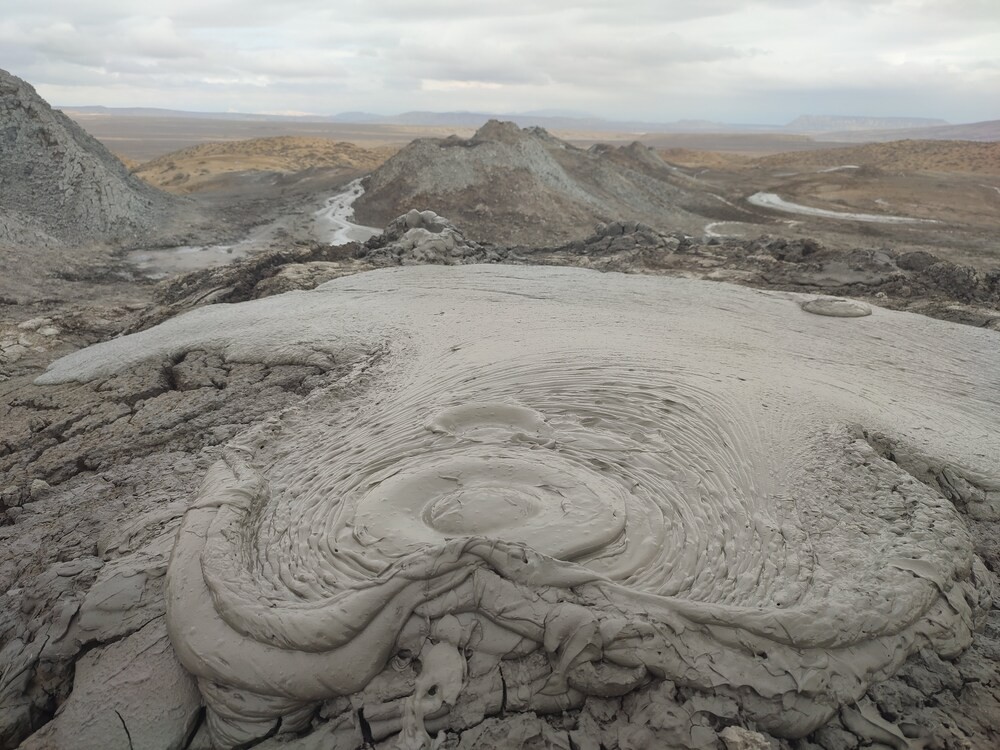
Atashgah Fire Temple
You should be back in Baku in the early afternoon, giving you time to visit the famous Ateshgah Fire Temple! It’s located 30km away from the city center.
This temple is a UNESCO World Heritage site and was built in the 17th century on a natural gas vent. The temple was used to worship fire, and you can still see the burning fire coming out of the ground!
To get there you should use a variety of transport methods. Just ask Google Maps. The Journey should take about an hour. Don’t worry, the Temple is open until 6 PM. Entrance fee: 4 AZN / 2.2 EUR.
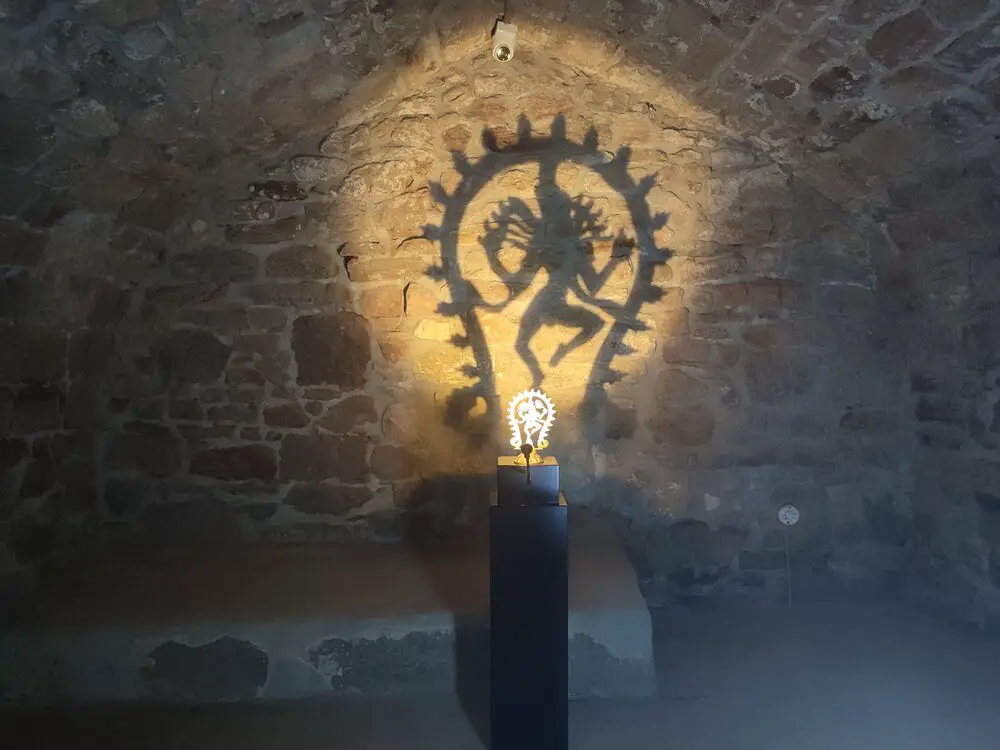
Yanar Dag
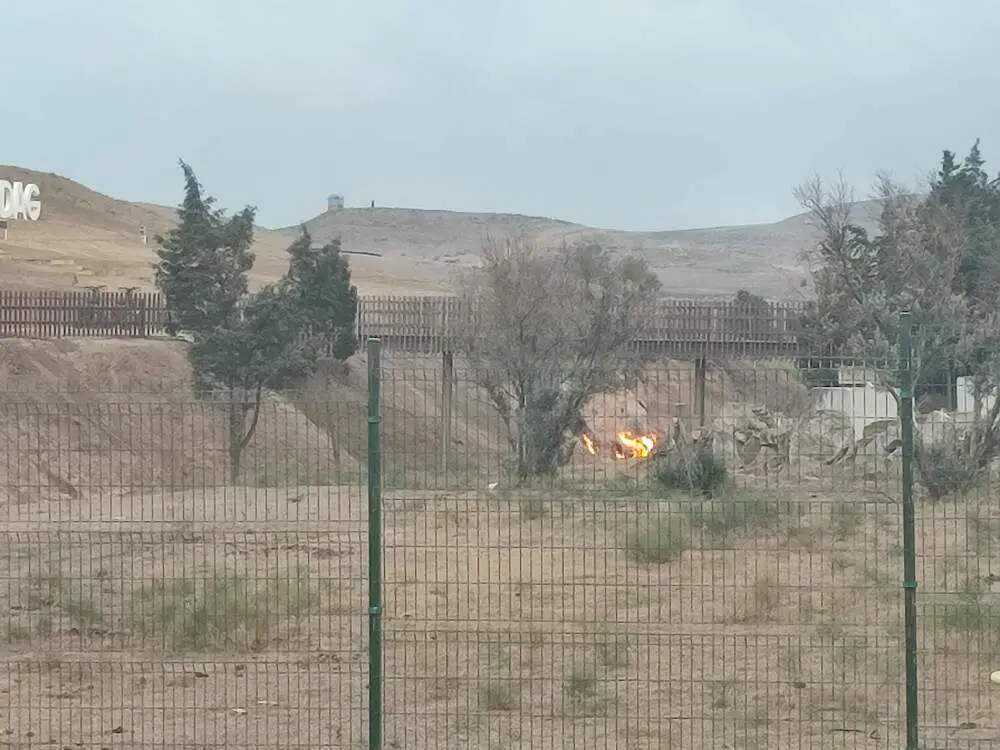
You’ll only really have time for either the Fire Temple or the “Burning Mountain” Yanar Dag. It is a natural wonder that has been burning for centuries, fueled by natural gas reserves beneath the surface.
The flames can reach up to 10 meters in height and never extinguish, creating a mesmerizing sight for visitors.
But honestly, it’s not worth it.
First of all, there’s an entrance fee of 9 AZN / 5 EUR for foreigners (while only 2 AZN for locals), secondly, you can easily see the flames if you just walk to the corner of the fences and lastly, it’s not as spectacular as described by words. I went there and didn’t even go in.
If you still want to go, it will take you about 75 minutes by public transport. Again, ask Google Maps.
Day 7: Departure
On your last day, take some time to explore the local markets and cafes before heading to the airport to catch your flight. If time permits, take a stroll through the city or visit one of the attractions you missed in Baku.
To get to the airport take the Aero Express Bus from Baku Central Railway Station (28 May Station). It costs 1.50 AZN / 0.8 EUR which you must have on your Baku Card (no cash).
Azerbaijan is a wonderful country to explore on a budget. From the bustling streets of Baku to the stunning landscapes of the Caucasus Mountains, there’s something for every traveler.
Important logistical information
How to get to Azerbaijan
As of late 2024, Azerbaijan’s land borders still remain closed. Officially due to COVID, although all other measures have been dropped. The authorities have perpetually pushed the end date further and further for almost 5 years now.
When I visited in October 2022 the only way to enter was by air and that is what I did – on a 110$ flight from Tbilisi to Baku on the budget (although the price tag wasn’t budget at all) airline Buta Airways.
If the land border opens, there’s a much cheaper way to travel between Tbilisi and Baku both by bus or train.
- Train 37 runs once per day from Tbilisi to Baku and takes 12 hours. The cheapest Platzkart ticket is around 40 GEL / 15 EUR. You can book tickets in person at Tbilisi Central Station. The ticket desk is at level 3, the same place where you can buy a ticket for the train to Yerevan.
- Buses bound for Baku depart from Ortachala bus station. Ask in person for timing and cost.
Visa and entry requirements
Almost all ex-Soviet countries plus Turkey can enter Azerbaijan visa-free. Since you’re reading this in English, chances are you’ll need a visa.
Thankfully, Azeri visa is one of the easiest to obtain in the world. Most Europeans, most South Americans, citizens of Canada, the USA, Australia, and New Zealand (among others) can apply for an e-visa at the official portal. You can check if you need a visa here.
If you’re Armenian, then you cannot enter Azerbaijan. Even only having an Armenian last name will get you outright refused.
If you have been to Armenia before going to Azerbaijan, you won’t have problems at the border. I was in this situation and the border officials asked me about where I had been and why, but that was pretty much it.
Having visited Azerbaijan and going to Armenia is similar, although I’ve heard that interrogation might be a bit more thorough. Read more about traveling to both Azerbaijan and Armenia on the same trip here.
If you’ve visited Nagorno Karabakh, I strongly advise against all travel to Azerbaijan. If there’s any evidence that you’ve been in the disputed region, the best case is you get refused entry, worst case is you get persecuted for illegal entry into Azerbaijan.
Do not travel to Azerbaijan if you’ve been to Nagorno Karabakh.
It is unclear how these conditions will change after the events of September 2023.
How much money do you need?
Azerbaijan is a relatively cheap country. If you’re on a backpacker’s budget, you can easily get within 30 euros per day.
To see my breakdown of expenses for my trip there, check out my Azerbaijan Budget Report and my super helpful Tourist Guide to Money in Azerbaijan.

